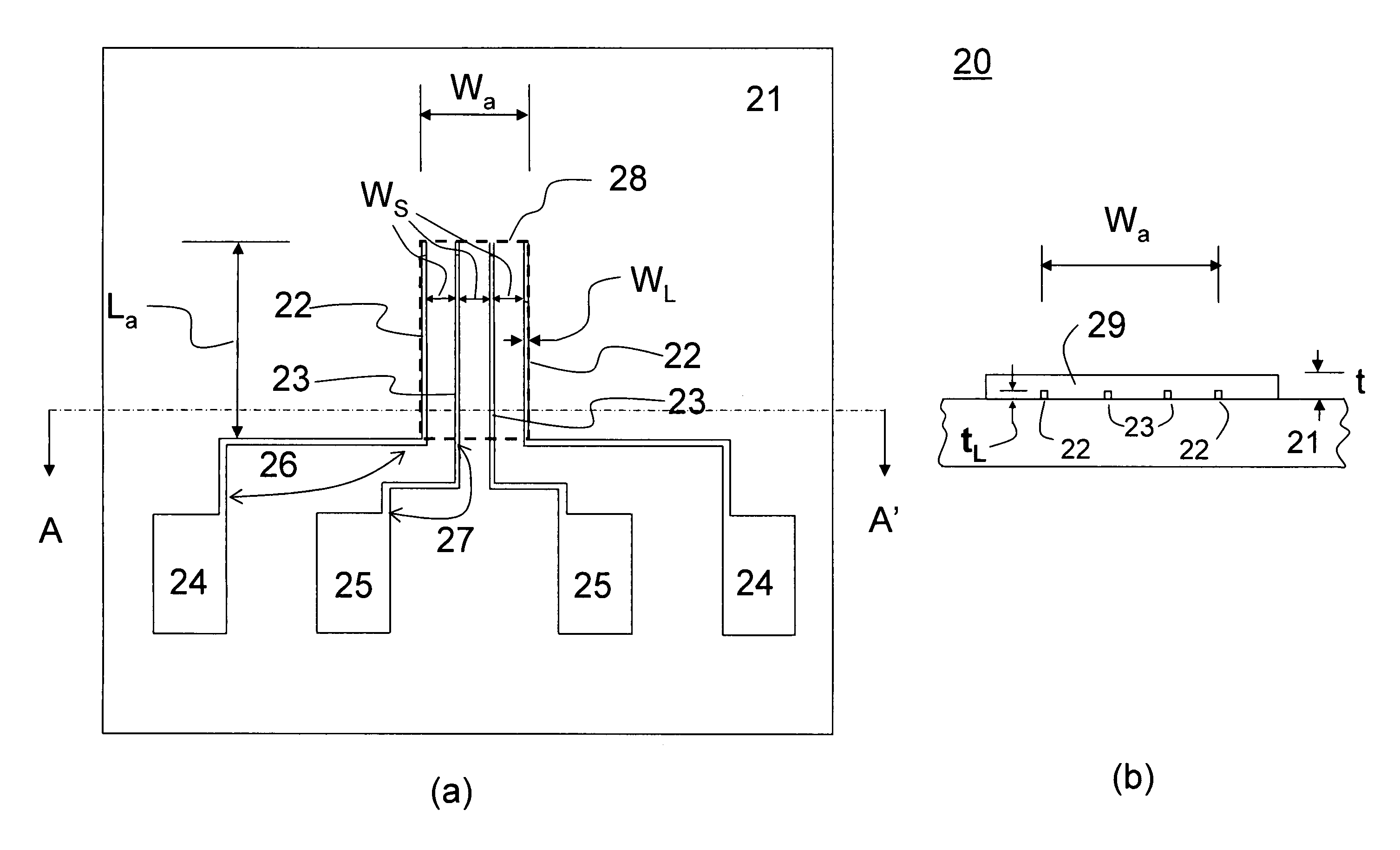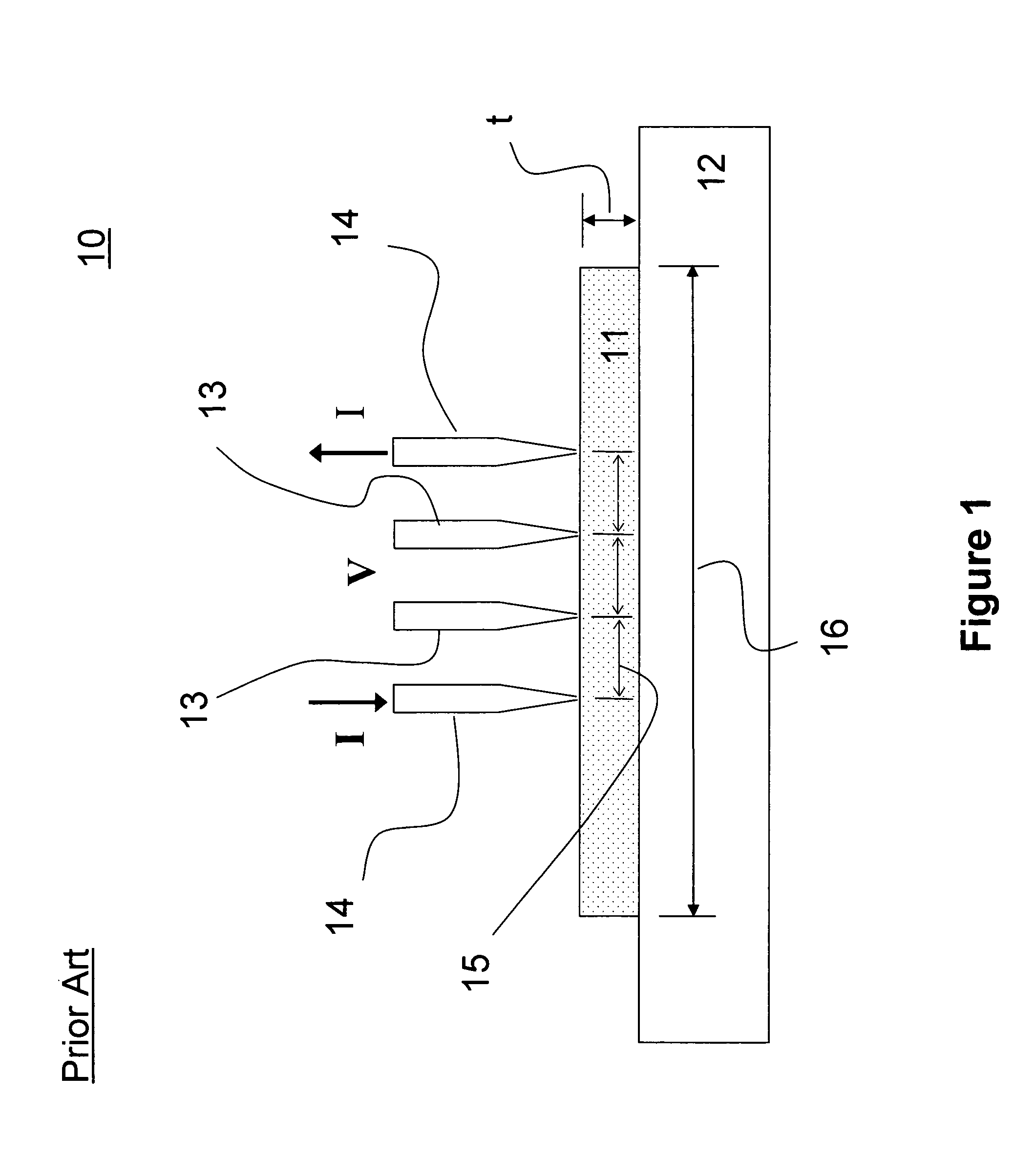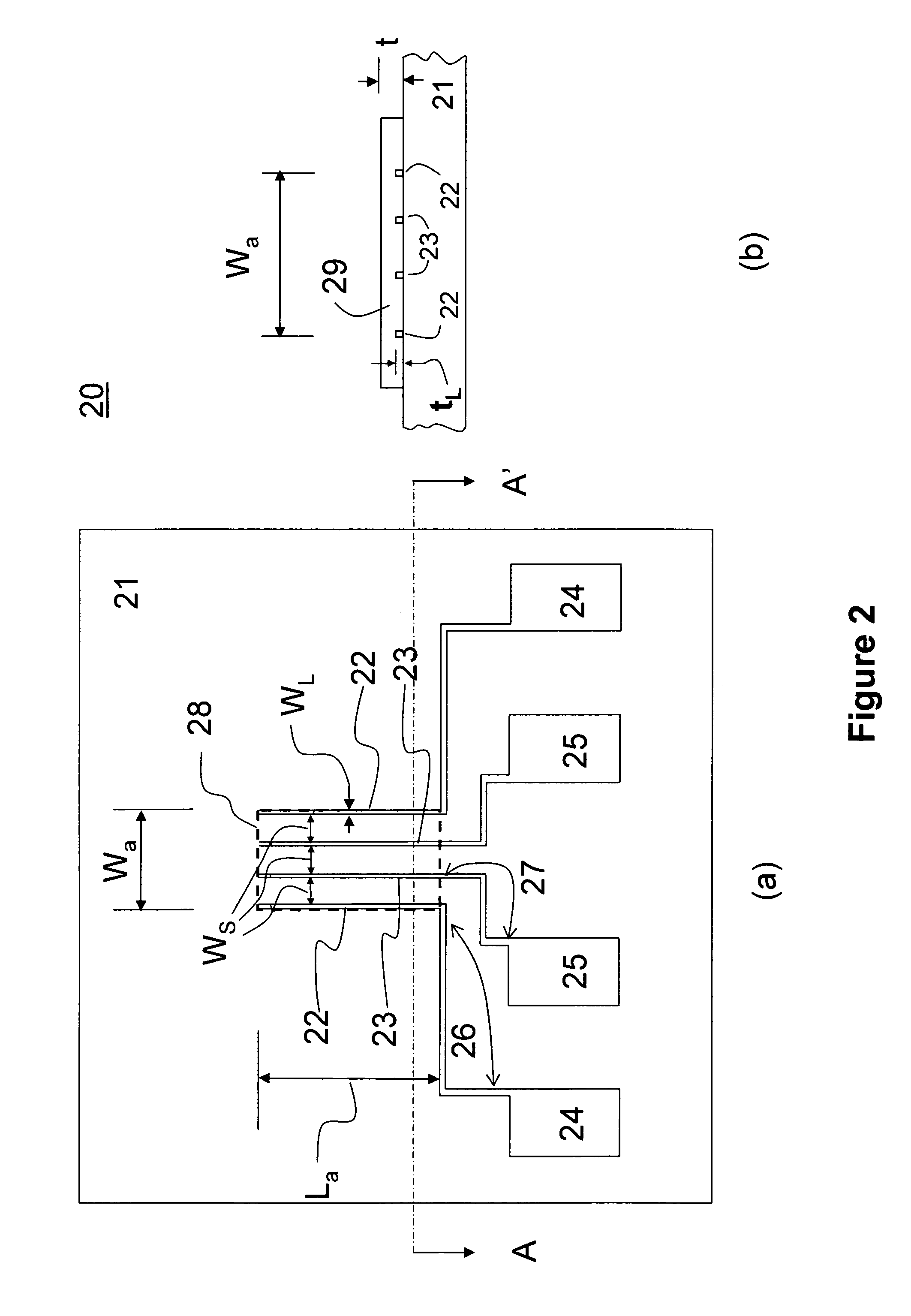Four-terminal methods for resistivity measurement of semiconducting materials
a semiconducting material and resistivity measurement technology, applied in the direction of electrical testing, instruments, electrical apparatus, etc., can solve the problems of increasing the difficulty of device engineers designing and simulating device structures, affecting the accuracy of semiconductor resistivity measurement, etc., to achieve accurate measurement of semiconductor resistivity of thin films, reduce contact resistance, and evaluate resistivity uniformity
- Summary
- Abstract
- Description
- Claims
- Application Information
AI Technical Summary
Benefits of technology
Problems solved by technology
Method used
Image
Examples
examples
[0064]In the following examples we present resistivity measurement results for some typical organic semiconductors using the four-line structure and the four-terminal measurement methods.
1. Four-Line Testing Chip
[0065]The four-line structure testing chips used in the examples are fabricated on glass slides but one should not limit oneself to glass substrates only.
[0066]Four-line testing chip parameters used in the examples are:[0067]Substrate: glass slide[0068]Substrate dimension: 1.1×1.1 cm2 [0069]Substrate thickness: 1 mm[0070]Metallic liner length: 3.5 mm[0071]Metallic line width: 3.0 μm[0072]Spacing between fingers: 50 μm[0073]Metals used: Au, Ag, Ti, Al[0074]Resistance of metallic lines: <1 ohm
2. Four-Terminal Resistivity Measurement
[0075]In this section, we will give a few examples of four-terminal resistivity measurements carried out on several typical organic semiconductor materials. In this work, we have employed a Hewlett Packard DC power supply (mode no. 6200B) and two HP...
PUM
 Login to View More
Login to View More Abstract
Description
Claims
Application Information
 Login to View More
Login to View More - R&D
- Intellectual Property
- Life Sciences
- Materials
- Tech Scout
- Unparalleled Data Quality
- Higher Quality Content
- 60% Fewer Hallucinations
Browse by: Latest US Patents, China's latest patents, Technical Efficacy Thesaurus, Application Domain, Technology Topic, Popular Technical Reports.
© 2025 PatSnap. All rights reserved.Legal|Privacy policy|Modern Slavery Act Transparency Statement|Sitemap|About US| Contact US: help@patsnap.com



